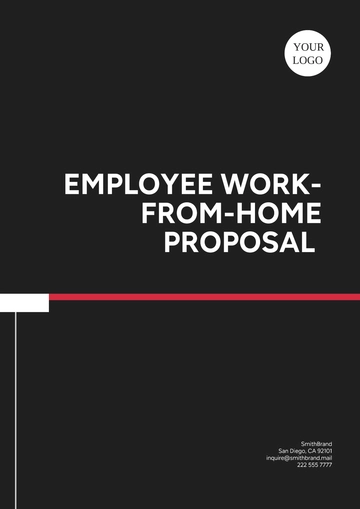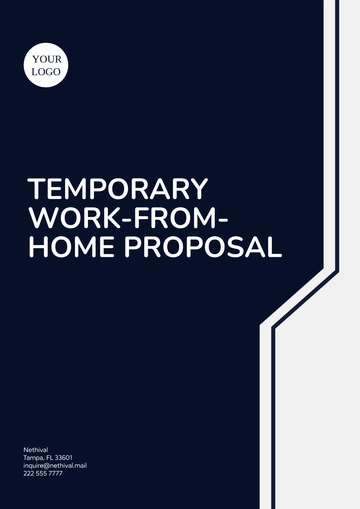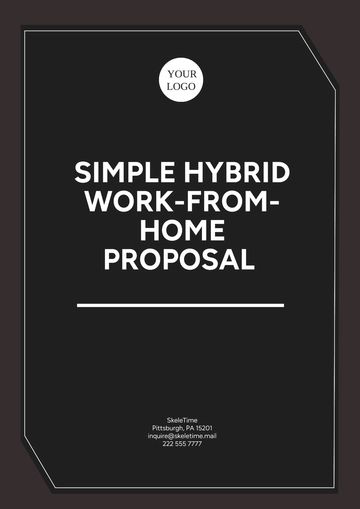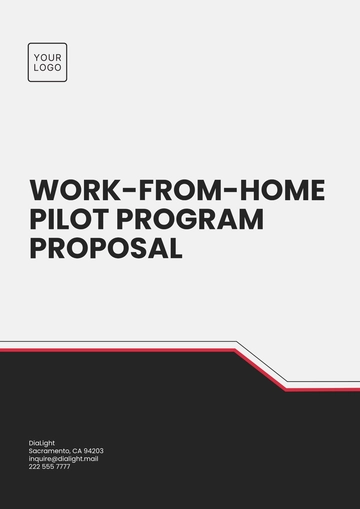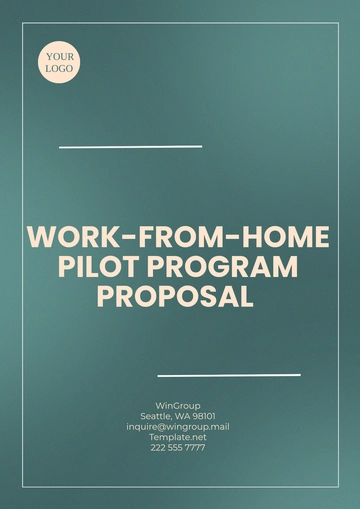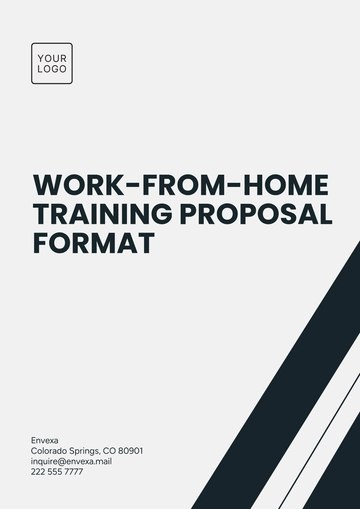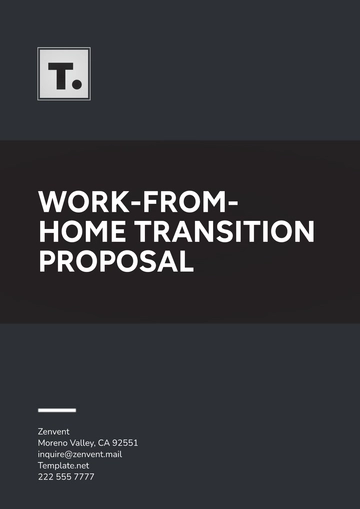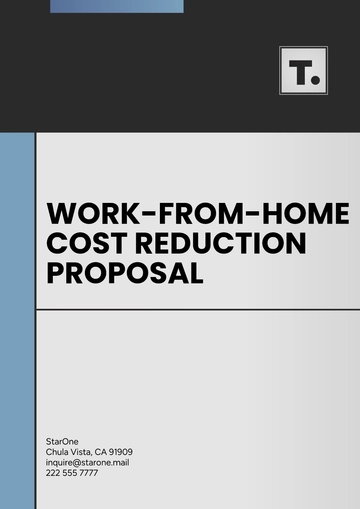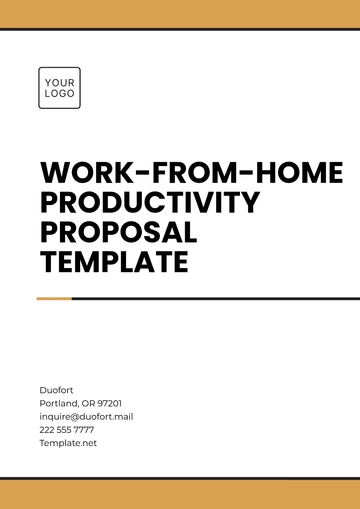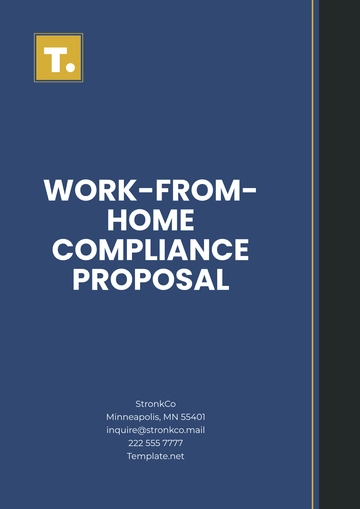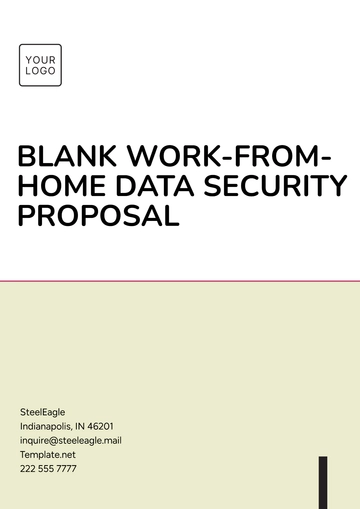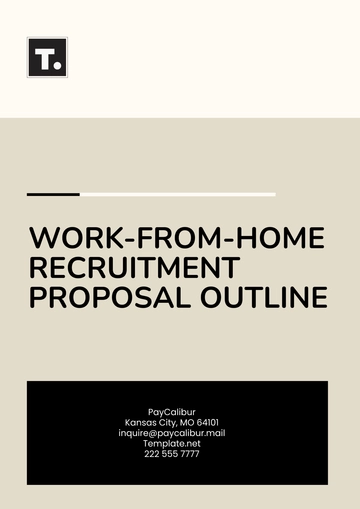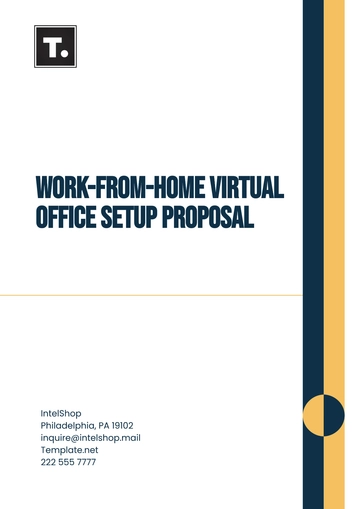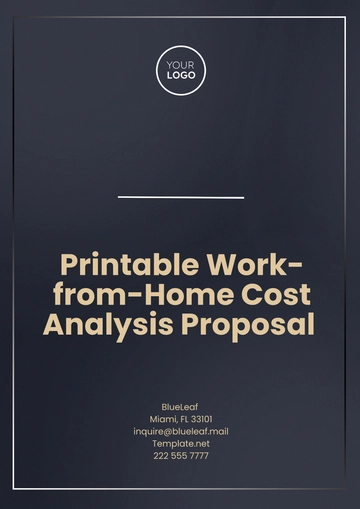Free Corporate Work-from-Home Proposal Layout

Prepared for: [Your Company Name]
Prepared by: [Your Name]
Date: [Date]
1. Executive Summary
Provide a brief overview of the work-from-home proposal.
Outline the purpose and key goals of transitioning to or expanding work-from-home (WFH) policies.
2. Objective and Purpose of the Proposal
State the key reasons for proposing a work-from-home solution (e.g., employee productivity, cost savings, flexibility, work-life balance).
Discuss how the WFH arrangement aligns with the company’s long-term goals.
3. Work-from-Home Model Overview
Describe the proposed model (e.g., full-time remote, hybrid, flexible schedule).
Specify the number of employees, teams, or departments that will participate.
Define roles and responsibilities that will be carried out remotely.
4. Technology and Tools Required
List the technology platforms (e.g., collaboration tools, VPN, remote desktop software) that will support remote work.
Outline the IT support and infrastructure needed for seamless WFH operations.
Highlight any training or onboarding necessary for employees to adapt to these tools.
5. Workplace Flexibility and Employee Productivity
Address how remote work will improve employee satisfaction, retention, and overall productivity.
Discuss any adjustments to workflow, time management, or performance metrics.
6. Communication and Collaboration Strategies
Describe how communication will be maintained among team members (e.g., video calls, messaging apps).
Mention frequency and types of meetings (daily stand-ups, weekly check-ins).
Identify how team collaboration will be managed remotely.
7. Employee Engagement and Well-being
Propose initiatives for maintaining employee engagement, morale, and work-life balance.
Include wellness programs, virtual team-building activities, and resources for mental health.
8. Compliance, Security, and Legal Considerations
Address any legal and compliance concerns related to remote work (e.g., data privacy, health and safety regulations).
Outline security measures to protect company data, including secure networks and regular audits.
9. Cost Analysis
Provide a detailed cost breakdown for implementing a remote work system (e.g., technology investments, employee stipends, software subscriptions).
Estimate the potential savings (e.g., office space, utilities).
10. Monitoring and Reporting
Define how remote work will be monitored, measured, and evaluated.
Discuss performance tracking and reporting to ensure goals are being met.
11. Timeline for Implementation
Provide a clear timeline for the rollout of the work-from-home proposal.
Include milestones, such as pilot phases, technology setup, and full implementation.
12. Conclusion
Summarize the benefits of transitioning to a work-from-home model.
Reaffirm the positive impact on productivity, employee satisfaction, and company success.
- 100% Customizable, free editor
- Access 1 Million+ Templates, photo’s & graphics
- Download or share as a template
- Click and replace photos, graphics, text, backgrounds
- Resize, crop, AI write & more
- Access advanced editor
Create impactful corporate proposals with the Corporate Work-from-Home Proposal Layout Template. Its editable and customizable design makes it suitable for various corporate needs. Adjust content effortlessly through Template.net's Ai Editor Tool for professional-grade results.
You may also like
- Business Proposal
- Research Proposal
- Proposal Request
- Project Proposal
- Grant Proposal
- Photography Proposal
- Job Proposal
- Budget Proposal
- Marketing Proposal
- Branding Proposal
- Advertising Proposal
- Sales Proposal
- Startup Proposal
- Event Proposal
- Creative Proposal
- Restaurant Proposal
- Blank Proposal
- One Page Proposal
- Proposal Report
- IT Proposal
- Non Profit Proposal
- Training Proposal
- Construction Proposal
- School Proposal
- Cleaning Proposal
- Contract Proposal
- HR Proposal
- Travel Agency Proposal
- Small Business Proposal
- Investment Proposal
- Bid Proposal
- Retail Business Proposal
- Sponsorship Proposal
- Academic Proposal
- Partnership Proposal
- Work Proposal
- Agency Proposal
- University Proposal
- Accounting Proposal
- Real Estate Proposal
- Hotel Proposal
- Product Proposal
- Advertising Agency Proposal
- Development Proposal
- Loan Proposal
- Website Proposal
- Nursing Home Proposal
- Financial Proposal
- Salon Proposal
- Freelancer Proposal
- Funding Proposal
- Work from Home Proposal
- Company Proposal
- Consulting Proposal
- Educational Proposal
- Construction Bid Proposal
- Interior Design Proposal
- New Product Proposal
- Sports Proposal
- Corporate Proposal
- Food Proposal
- Property Proposal
- Maintenance Proposal
- Purchase Proposal
- Rental Proposal
- Recruitment Proposal
- Social Media Proposal
- Travel Proposal
- Trip Proposal
- Software Proposal
- Conference Proposal
- Graphic Design Proposal
- Law Firm Proposal
- Medical Proposal
- Music Proposal
- Pricing Proposal
- SEO Proposal
- Strategy Proposal
- Technical Proposal
- Coaching Proposal
- Ecommerce Proposal
- Fundraising Proposal
- Landscaping Proposal
- Charity Proposal
- Contractor Proposal
- Exhibition Proposal
- Art Proposal
- Mobile Proposal
- Equipment Proposal
- Student Proposal
- Engineering Proposal
- Business Proposal

